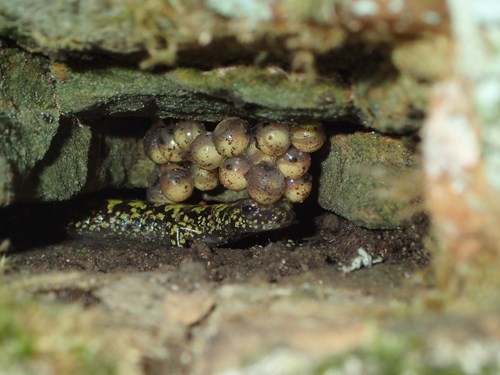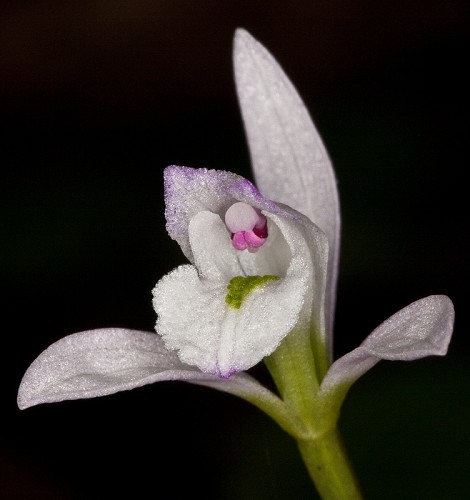Heritage Program
The Mississippi Natural Heritage Program (MNHP) identifies and maps in a spatial database (Biotics) the localities of Mississippi's rarest plants, animals, exemplary natural communities, and special geological features. This database is updated continuously and utilized to portray the distribution of each species, to determine its degree of rarity, and assist with development of state, national, and global priorities for the preservation of natural diversity.

State-endangered Green Salamander guarding her eggs that can be seen clinging to the wall above her. Photo credit: Tom Mann
The MNHP, established in 1976 as a cooperative agreement between The Nature Conservancy and the Mississippi Parks Commission, is part of an international network of State Natural Heritage Programs and Conservation Data Centers, all building on the same data collection methodology. Full administration of the MNHP was assumed by the Mississippi Department of Wildlife, Fisheries, and Parks in 1978.

Three birds orchid is considered an S2 species in MS. Photo credit: SoutheasternFlora.com
The Natural Heritage Inventory project has four major areas of activity:
1. To obtain information on the status and location of rare biota and other entities of conservation interest.
- Conduct field surveys for new occurrences and to verify existing records of rare biota and other entities of conservation interest.
- Extract relevant information regarding rare biota and other entities of interest from the scientific literature, researchers, and communication with the general public.
2. To maintain distributional and status information on rare biota, exemplary natural communities, and other natural features of conservation interest in the Biotics Database.
3. To use information in the database to facilitate conservation of these entities during the environmental review process. Avoidance of impacts is encouraged, where possible, if necessary to maintain the existence of a population, integrity of a community or natural feature, and when there is potential for negative impacts to legally protected species. Best management practices are also encouraged on state, federal, and private lands.
4. To manage and promote the Natural Areas Registry and the Scenic Streams Stewardship Program. Both programs encourage landowners to voluntarily protect special habitats and streamside areas either through non-binding conservation agreements or long-term conservation easements. State and Federal income tax incentives exist for landowners who protect these areas through the creation of conservation easements.
Additional Information
- About Our Database
- Request Natural Heritage Information
- Natural Areas Registry
- NHP Online Data
- Rank & Status Definitions
Reference Documents
- List of Plants - Tracking
- List of Plants - Watching
- List of Animals - Tracking
- Listed Species of MS
- Endangered Species of MS



